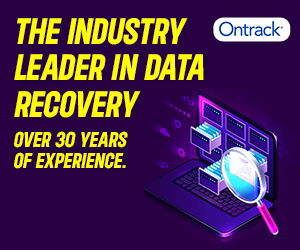Introducing new IT equipment into a business ecosystem can be as challenging as it is crucial. The impact of smooth equipment installation reverberates across departments, affecting productivity, customer experience, and ultimately, the bottom line. The intricate nature of IT infrastructures demands a proactive approach, one that is structured, strategic, and meticulously executed. In this guide, we’ll share detailed strategies to streamline IT equipment installation processes, ensuring that your business incorporates new technology with efficiency and precision.

Developing a Comprehensive Equipment Strategy
Before any boxes are unpacked or cables are wired, strategic planning lays the groundwork for a successful installation. Start by defining objectives – what specifically needs to be achieved by installing the new equipment? Should you get in touch with Bud Industries or your local equipment supplier for the right equipment or instructions? This approach ensures that every installation is rooted in a well-considered purpose, aligning with broader business goals.
Next, consider compatibility and scalability. Will the new equipment seamlessly integrate with existing systems? It’s essential to safeguard your investments by choosing technology that can grow with your organization. A rigorous consideration of compatibility will prevent future headaches, such as costly retrofitting or disjointed operations. This phase also involves identifying potential risks and devising contingency plans, preparing your team for a range of scenarios from technical hiccups to timeline adjustments. It’s also critical to plan for future maintenance and upgrades. An equipment strategy should include a clear roadmap for ongoing support, outlining responsibility for upkeep, software updates, and long-term performance monitoring. By building a maintenance plan from the outset, you can extend the life of your investments and maintain high operational efficiency.
Structuring Team and Process Management
Efficient installation is a product of effective team management and streamlined processes. Start by assembling a dedicated team, each member possessing clear roles and responsibilities. This structure minimizes confusion, ensures accountability, and allows for smoother workflow coordination. The team should comprise not only IT specialists but also stakeholders from relevant departments to provide input and ensure alignment with business functions.
Then, map out an installation timeline with precise milestones. A clear project plan, complete with deadlines and deliverables, helps keep the team on track and adhering to a structured implementation strategy. Enhanced by regular progress meetings, the timeline becomes a dynamic tool for tracking and managing the installation’s progress. Consider utilizing project management tools to foster collaboration, share updates, and manage tasks efficiently. Software platforms such as Trello, Asana, or good old-fashioned Gantt charts can help teams visualize progress and manage responsibilities effectively, particularly in larger-scale installations with multiple moving parts.
Integrating Technologies Carefully
The installation process should never occur in isolation; new technologies must seamlessly fit into the broader IT ecosystem. This requires a precise approach to integration, beginning with thorough pre-installation planning. Evaluate bandwidth, network capabilities, and power requirements to ensure they meet the new equipment’s demands. During the execution phase, test integrations at each step, beginning with small-scale tests and gradually moving toward a full-system trial. This iterative approach allows for early detection and resolution of integration issues, reducing unexpected disruptions during deployment.
Engage with vendors and manufacturers early on, leveraging their expertise to guide equipment placement and network settings. Oftentimes, they can provide detailed instructions or on-site support to optimize the setup process. Finally, safeguard data integrity by implementing robust backup solutions before, during, and after the installation. Along with IT solutions, your business also needs wealth management to safeguard the physical amenities of the workplace.

Professional Education and Rigorous Testing
Investing in your IT team’s knowledge can be as important as the investment in the technology itself. Arrange for comprehensive training sessions before the installation goes live, ensuring that your team is well-versed in equipment setup and operation as well as maintenance and troubleshooting. Testing should not be confined to the initial setup.
After installation, perform stringent validation through end-to-end testing across all devices and platforms to confirm that the new equipment performs within operational expectations. This stage is also a golden opportunity for users to familiarize themselves with the new technology and provide feedback on its functionality, which can be invaluable in fine-tuning its performance.
Documentation and Continuous Support
Thorough documentation captures the nuances of the installation process, acting as a knowledge repository for future reference. Create detailed records of configurations, installations, integration techniques, and maintenance procedures. This documentation empowers your team with a wealth of information, streamlining future installations and troubleshooting.
Post-installation support should not be an afterthought. Ensure that a detailed support plan is in place, offering immediate assistance for any issues that may arise. This plan might include an internal help desk, ongoing training, or service-level agreements with external support providers. Regular maintenance and monitoring protocols should also be established to detect and address potential problems early on, ensuring that the new equipment operates at peak performance consistently.
Streamlining IT equipment installation processes is a multifaceted undertaking that demands meticulous preparation, clear communication, and systematic execution. By employing the strategies outlined in this guide, businesses can capitalize on new technology investments with confidence. Remember, the key to successful installation lies not only in the technology itself but in the workflows, people, and foresight that support its integration. Whether you’re updating a single workstation or revamping your entire data center, a methodical approach ensures that the transition is smooth and the benefits are maximized. The proactive stance taken in the installation process ripples across the organization, enhancing the agility and responsiveness of the IT department, and by extension, the entire business. As IT becomes increasingly integral to operations, a well-structured equipment installation process is not just a convenience but a competitiveness enabler.





